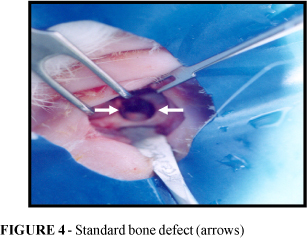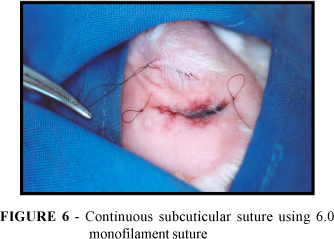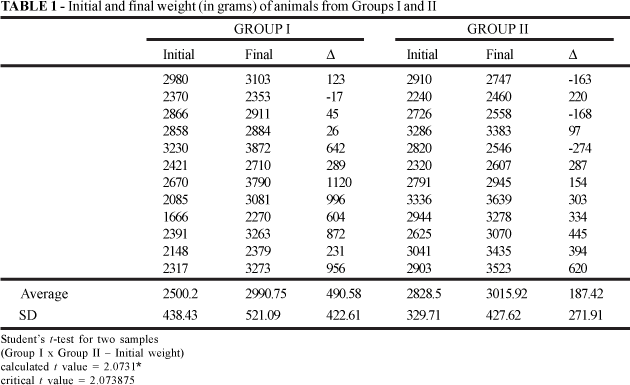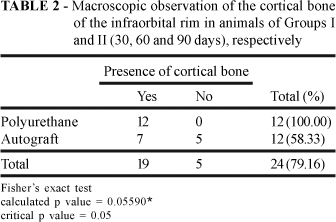PURPOSE: Morphological study comparing castor oil polyurethane and autogenous bone graft to repair bone defect in zygomatic bone of rabbits. METHODS: Twenty-four adult, male New Zealand rabbits were randomly distributed between two groups of twelve. Bone defects of 5mm in diameter were cut through the zygomatic bone and filled with polyurethane discs in the experimental group or autogenous bone harvested from the tibia in the control group. Animals were sacrificed after 30, 60 or 90 days, and the zygomatic bones were macro- and microscopically analyzed. Student's, Fisher's, chi-squared and McNemar's tests were used for statistical analysis. RESULTS: Both the castor oil polyurethane and the autograft adapted well to the defect, with no need for fixation. Fibrous connective tissue encapsulated the polyurethane, but no inflammation or giant cell reaction was observed. Acidophilic and basophilic areas were observed inside the micropores of the polyurethane, suggesting cell nuclei. After 90 days, bone repair with a lamellar pattern of organization was observed in the control group. CONCLUSION: The castor oil polyurethane was biocompatible and did not cause inflammation. It may be considered an alternative to fill bone defects.
Biocompatible Materials; Bone Transplantation; Castor Oil; Rabbits


















